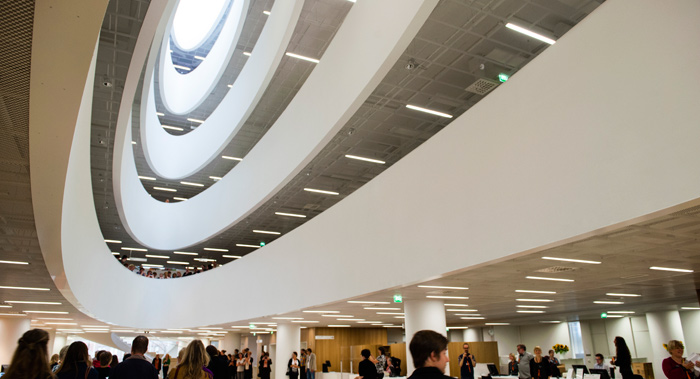ABOUT UNIVERSITY OF HELSINKI´S MAIN LIBRARY

Helsinki University Main Library and its services
Helsinki World Design Capital 2012 Year and University
The University of Helsinki´s new main library opened its doors
The University of Helsinki’s new Main Library, situated in the Kaisa House, opened its doors to the public on 3rd September. Finland’s largest university library has been prized for its architecture and its interior is decorated with design classics.
Designed by Anttinen Oiva Architects Ltd, the building received the annual award of the Finnish Critics’ Association in the spring of 2012, as the first building honoured in the history of the award. Red, old-looking bricks are used to simulate the architectural style that dominates the surroundings, but the use of arches and big, spectacular glass windows give the facade a modern look and feel. One of the most important goals of the project was to look far into the future.
“The nature of libraries will change considerably over the next 50 years, and this called for flexible building system solutions,” says architect Vesa Oiva. The Kaisa House contains 11 stories of which four are underground. The open collection includes almost 30 km of shelving filled with scientific literature and 2,5 million books are loaned per year. The roughly 100 members of the library’s personnel serve around one million users per year.
During the World Design Capital Helsinki 2012 year the library has also develop its services together with the library’s users, which can also be noticed in the planning of the facilities. For example, the library’s spaces have been marked with signs that indicate the desirable sound level: a green sign means that people can talk freely, red a completely silent reading room and orange that quiet talk and the use of laptops is allowed.
“We hope that the library will be a meeting place for students, researchers and the citizens of Helsinki. It is said that the library is the heart of the university – I am confident that this is the case in our new Main Library,” says Chief Librarian Kaisa Sinikara.
Apart from lounge areas, group study facilities and reading rooms there is also a small kitchen for the students. An electronic map service and a mobile site for browsing the collections have also been developed. The service will be available from the autumn onwards.

